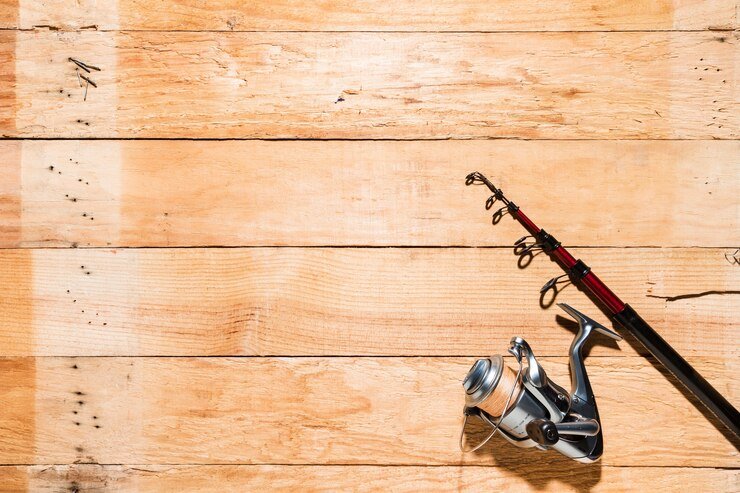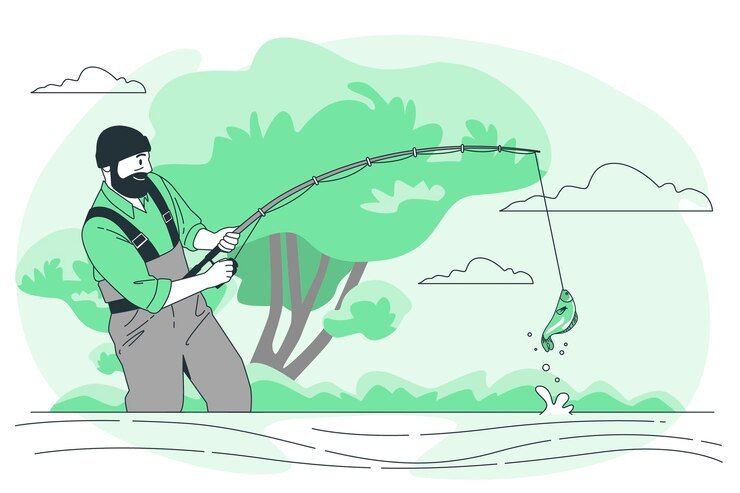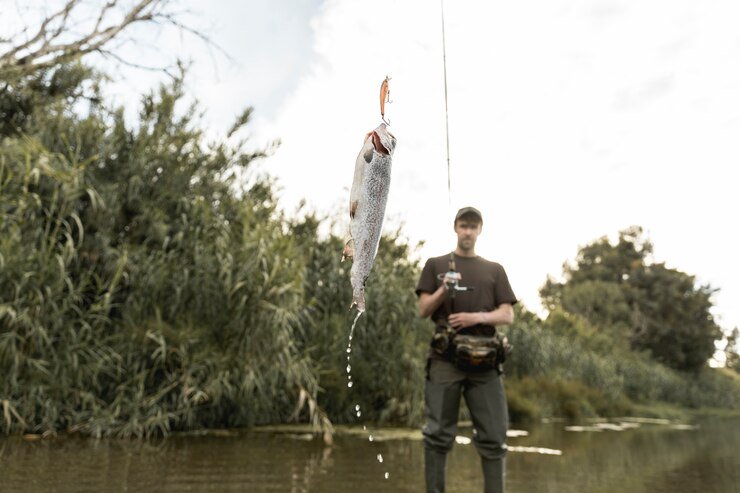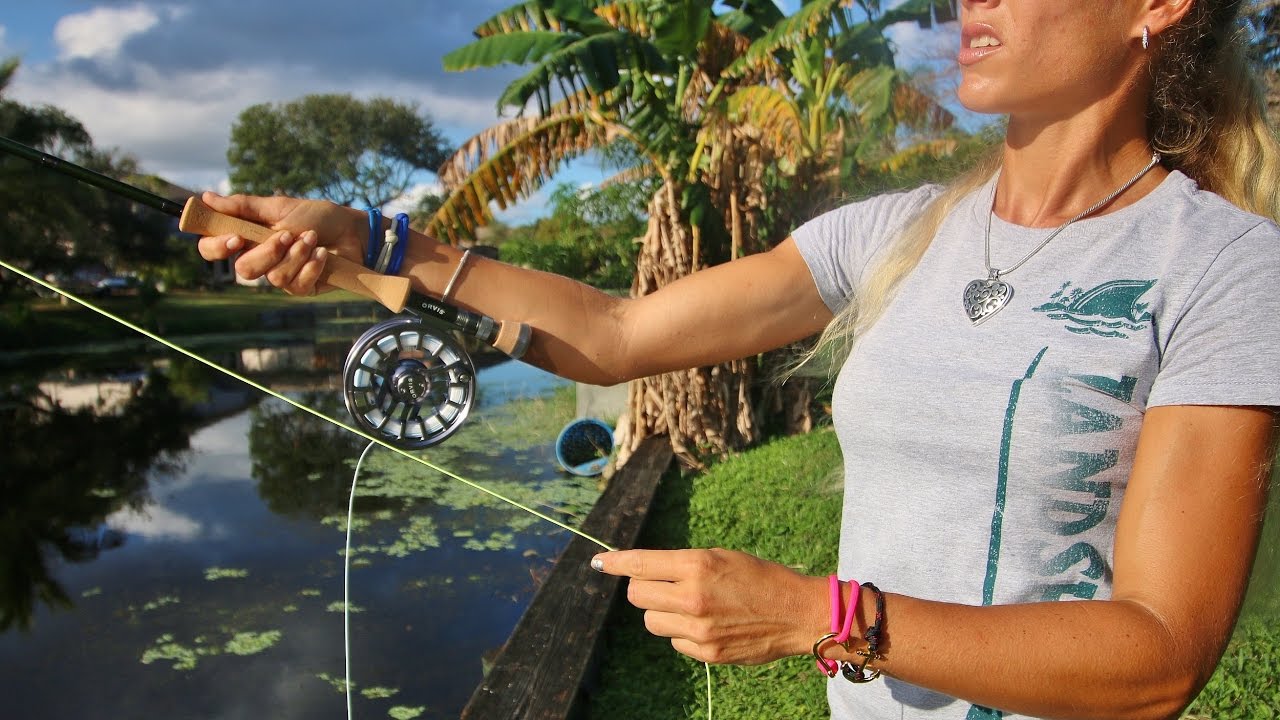Mastering the Art of Fishing Rods: Your Complete Guide
- 1 The Different Types of Fishing Rods
- 1.0.1 Spinning Rods
- 1.0.2 Baitcasting Rods
- 1.0.3 Fly Fishing Rods
- 1.0.4 Telescopic Rods
- 1.0.5 Surf Fishing Rods
- 1.1 The Materials that Matter
- 1.1.1 Graphite
- 1.1.2 Fibreglass
- 1.1.3 Composite
- 1.1.4 Bamboo
- 1.2 Choosing the Right Fishing Rod
- 1.2.1 Fishing Environment
- 1.2.2 Fishing Technique
- 1.2.3 Target Species
- 1.2.4 Budget
- 1.2.5 Brand and Reviews
- 1.3 Maintaining Your Fishing Rod
- 1.4 The Anatomy of a Fishing Rod
- 1.5 Advanced Techniques
- 1.6 Customization and Personalization
When it comes to the world of fishing, few tools are as essential as a top-quality fishing rod. Whether you’re a seasoned angler or a novice just dipping your toes into the world of fishing, understanding the nuances of fishing rods can make a world of difference in your fishing experience. In this comprehensive guide, we’ll delve deep into the world of fishing rods, offering insights, tips, and recommendations to help you make an informed choice. From the various types of fishing rods to the materials they’re made of, and how to choose the perfect one for your specific needs, we’ve got you covered.
The Different Types of Fishing Rods

Fishing rods come in various types, each tailored for specific fishing techniques and environments. Let’s explore some of the most common types:
Spinning Rods
Spinning rods are versatile and suitable for beginners and experienced anglers alike. They work well for various fishing techniques, from casting to trolling. Spinning rods are recognized by their reel placement on the underside, making them easy to cast and handle.
Baitcasting Rods
Baitcasting rods are preferred by experienced anglers who need precise control. These rods are designed for accuracy and are ideal for heavy lures and larger fish. They feature a unique reel placement on top and require a bit of skill to master.
Fly Fishing Rods
Fly fishing rods are designed for the art of fly fishing, a technique that involves delicately presenting lightweight artificial flies to the fish. These rods are typically long and flexible to allow for a graceful casting motion.
Telescopic Rods
Telescopic rods are known for their portability and convenience. These rods can be collapsed to a compact size, making them perfect for anglers on the move. They come in various types, including spinning and baitcasting.
Surf Fishing Rods
Surf fishing rods are designed for casting bait and lures from the shoreline into the surf. They are typically long and sturdy to handle the rough surf conditions and powerful fish.
The Materials that Matter

The performance and durability of a fishing rod greatly depend on the materials used in its construction. The following materials are commonly used in fishing rods:
Graphite
Graphite is a popular choice for its lightness and sensitivity. Graphite rods are known for their responsiveness, making them ideal for detecting even the slightest nibbles from fish. They are perfect for finesse fishing.
Fibreglass
Fibreglass rods are more robust and are excellent for heavy-duty applications. They are less sensitive than graphite but can handle larger fish and heavier lures.
Composite
Composite rods combine the best of both worlds, featuring a blend of graphite and fibreglass. This results in a rod that offers a balance between sensitivity and strength.
Bamboo
Bamboo fishing rods are known for their traditional appeal and craftsmanship. While they may not be as efficient as modern materials, they are still cherished by many anglers for their classic charm.
Choosing the Right Fishing Rod

Selecting the perfect fishing rod can be a daunting task with so many options available. Here are some key factors to consider:
Fishing Environment
Consider where you’ll be fishing. Are you in freshwater or saltwater? Different environments require different types of rods.
Fishing Technique
What fishing techniques do you plan to use? Match your rod to the style of fishing you prefer, whether it’s casting, trolling, fly fishing, or something else.
Target Species
Think about the type and size of fish you aim to catch. Smaller fish may require a different rod than larger, heavier species.
Budget
Set a budget that suits your needs and stick to it. Fishing rods come in a wide price range, so there’s something for every angler.
Brand and Reviews
Research different brands and read reviews to get an idea of the best-performing fishing rods on the market. Quality matters, so investing in a reputable brand is often a wise choice.
Maintaining Your Fishing Rod

Once you’ve chosen your ideal fishing rod, it’s essential to take good care of it to ensure its longevity. Here are some tips for maintenance:
Clean Regularly: After each fishing trip, clean your rod to remove saltwater, dirt, and other debris that can cause damage over time.
Store Properly: Store your fishing rod in a cool, dry place, away from direct sunlight. Use protective cases or rod holders to prevent damage.
Check for Damage: Regularly inspect your rod for any signs of wear and tear, such as cracks, loose guides, or damaged reels. Address these issues promptly.
Use Rod Covers: Rod covers provide an extra layer of protection when transporting or storing your fishing rod.
Reel Maintenance: If you have a reel on your rod, maintain it according to the manufacturer’s instructions to ensure smooth operation.
The Anatomy of a Fishing Rod

Understanding the components of a fishing rod is crucial to making an informed choice.
Here’s a breakdown of the key parts:
- Handle: The handle, often made of cork or foam, is where you grip the rod. It’s important that the handle feels comfortable in your hand, especially if you plan to spend long hours fishing.
- Reel Seat: This is where the reel attaches to the rod. It should securely hold the reel in place and be compatible with the type of reel you intend to use.
- Guides: Guides are the rings attached along the length of the rod. They guide the fishing line and prevent it from tangling. High-quality guides are typically made of materials like aluminium oxide or ceramic to reduce friction and increase casting distance.
- Blank: The blank is the main body of the rod. It’s usually made of the materials we discussed earlier, like graphite or fibreglass. The blank’s length, thickness, and flexibility are crucial factors in how the rod performs.
- Action: The action of a rod refers to its flexibility and responsiveness. There are typically three categories: fast, medium, and slow. Fast-action rods bend mostly at the tip, medium-action rods bend in the middle, and slow-action rods bend throughout the blank.
- Power: Power, often referred to as rod weight, is the amount of pressure needed to bend the rod. It’s categorised as ultralight, light, medium, medium-heavy, and heavy. Lighter rods are suitable for smaller fish, while heavier ones are designed for larger species.
Advanced Techniques

For seasoned anglers looking to elevate their skills, understanding advanced techniques can make a significant difference in your fishing success.
- Drop Shotting: This finesse technique involves suspending your bait above the bottom. It’s highly effective for catching fish that are lurking near the lake or riverbed.
- Pitching and Flipping: These techniques are all about precision. Pitching involves casting your bait over a short distance, while flipping is even more accurate, allowing you to place your bait precisely where you want it.
- Swimbait Fishing: Swimbait lures mimic the look and motion of small fish, making them attractive to larger predators. Mastering the art of swimbait fishing can lead to impressive catches.
- Nymphing: Commonly used in fly fishing, nymphing involves presenting underwater insect larvae or nymphs to the fish. It’s a subtle technique that can be incredibly productive, especially in freshwater streams.
Customization and Personalization
Many anglers take pride in customising their fishing rods to suit their unique preferences and needs. You can upgrade your rod with custom grips, guides, or even have a professional rod builder create a one-of-a-kind rod for you. Personalising your fishing rod can make it feel like an extension of yourself, enhancing your overall fishing experience.

















